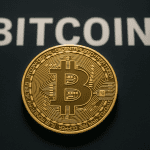XRP ETFs Shock The Market As $587M Inflows Push It Past Solana In Record Time
XRP has completely flipped the altcoin ETF narrative by pulling in an astonishing $587 million in cumulative inflows in less than ten trading days, overtaking Solana’s ETF lead even though Solana needed about twenty straight sessions to gather around $568 million. This sudden shift didn’t happen by luck or hype; it was the result of a coordinated combination of ultra-aggressive ETF fee strategies, strong institutional demand, and a market eager to diversify its regulated altcoin exposure beyond Bitcoin and Ethereum. Solana set the pace when its spot ETFs launched on October 28, notching 20 consecutive days of inflows and building a total of $840 million in assets under management, equivalent to about 1% of Solana’s entire market cap. But the story changed dramatically once XRP ETFs hit the scene. Within days of launch, XRP ETFs weren’t just attracting interest—they were accelerating at nearly twice Solana’s daily inflow intensity, compressing what Solana achieved in nearly a month into just over a week.
The biggest reason XRP ETFs exploded is simple: fees. Franklin Templeton’s XRPZ ETF entered the market with a sponsor fee of just 0.19%, and then went even further by waiving all fees on the first $5 billion in assets until May 31, 2026. Grayscale, not wanting to be outmaneuvered, responded by waiving fees on its GXRP ETF for the first three months. This instantly turned XRP into the single cheapest institutional grade altcoin ETF on the market, and when fees shrink to near zero, the biggest pools of traditional money pension funds, RIAs, wealth managers, banks finally get the green light to allocate because cost thresholds no longer block them. For institutions that operate on tight basis-point constraints, these fee waivers are not gimmicks but signals that now is the optimal time to enter.
Nothing reveals this better than what happened on November 24. On that day alone, XRP ETFs recorded $164 million in new inflows, a massive spike that clearly reflected pre-authorized institutional buy orders waiting for product availability. This wasn’t casual retail participation; it was deliberate capital deployment that had been sitting on the sidelines until the right ETFs appeared with recognizable brand names, low fees, and clear regulatory structures. The floodgates didn’t open randomly they opened the exact second the structural barriers were removed.
Solana, meanwhile, faced a different dynamic. While its ETF inflows were undeniably strong, they were fighting against a sharp 30% correction in Solana’s spot price. Those ETF inflows acted more like a stabilizer or shock absorber, soaking up selling pressure rather than driving upside momentum. Even with more than $510 million in inflows, Solana’s price struggled to reverse course. XRP’s behavior couldn’t have been more different. XRP had recently endured a 17% drawdown over the prior month, but once ETF inflows kicked in, the asset quickly rebounded about 10%, surging past the long-defended $2 level and reaching as high as $2.27. Historically, the region around $2 has been a psychological and liquidity-heavy zone where long-term holders often sell to break even, causing rallies to stall. But this time, ETFs acted like a constant non-price-sensitive demand sink, absorbing between $50 million and $100 million daily during peak flow days. That kind of demand dramatically reduces the usual sell pressure, turning what used to be a ceiling into a heavy-volume equilibrium zone where price can consolidate rather than collapse.
This difference Solana’s ETFs cushioning the fall versus XRP’s ETFs fueling a breakout shows why XRP suddenly became the dominant story in the altcoin ETF market. Institutions weren’t just buying XRP; they were accelerating momentum and altering price behavior. ETF flows tend to be “sticky,” meaning they often remain in the system for long periods rather than exiting quickly like speculative spot trades. That stickiness is part of why analysts now estimate that if current momentum remains consistent, XRP ETFs could hit around $1.5 billion in AUM by the end of the year, with a realistic chance of approaching $2 billion in 2025, especially as more issuers potentially enter the fee war.
These inflows also signal a deeper structural shift in how altcoins might behave going forward. Solana proved that altcoin ETFs could attract serious institutional flows. XRP then demonstrated that fee competition could dramatically accelerate those flows and reshape market momentum. Together, they show that we may be entering an ETF-driven altcoin era, where asset performance and investor attention become tied to regulated, low-cost financial products rather than purely on-chain speculation or retail hype cycles. In this new environment, altcoins with the right mix of liquidity, regulatory clarity, and issuer support may see disproportionate inflow-driven tailwinds.
XRP’s rise also highlights how ETF mechanisms can change psychological price zones. The $2 region has long been associated with older holders selling to break even, creating significant supply pressure. But ETFs don’t behave like emotional holders; they buy mechanically based on inflow demand, portfolio models, and institutional allocations. When ETF-driven flows enter a high-sell zone, they effectively dampen emotional selling, acting like a sponge that absorbs supply without hesitation. This structural shift can redefine chart behavior, making resistance zones softer and allowing higher consolidation.
Institutional psychology also plays a major role. For years, many funds avoided altcoins because the only accessible vehicles were unregulated exchanges and self-custody systems, which fail compliance tests for most traditional finance players. The moment XRP gained regulated ETF wrappers from recognizable issuers with ultra-low fees, the asset went from “unallocated curiosity” to “portfolio candidate.” For a large organization, the difference between 0.19% and 0.45% in fees isn’t trivial; it’s the line between being approved by an investment committee and being rejected as too expensive or too inefficient. XRP’s ability to come in as one of the cheapest altcoin ETFs ever launched created a competitive advantage that Solana didn’t have at its debut.
All of this creates a powerful narrative. While Solana remains one of the strongest assets fundamentally, the storyline in the ETF arena has shifted overwhelmingly toward XRP due to speed, fee incentives, and structural timing. Solana remains a major altcoin with a strong user base, ecosystem, and investor interest, but its ETF flows have been operating in a defensive market environment. XRP entered in an offensive one, and the fee war amplified that effect. With money flowing faster into XRP than Solana, and with more daily intensity, institutions have effectively declared XRP the short-term favorite.
The biggest question now is whether XRP’s momentum will continue and whether fee waivers will remain the primary competitive tool. When Franklin Templeton’s and Grayscale’s fee waivers eventually expire, the market will learn whether current inflows represent permanent long-term allocations or whether some capital rotates to other ultra-cheap alternatives. But given how ETF adoption patterns typically work in traditional markets, early products that attract substantial AUM tend to retain most of it, even after fees normalize, because institutions avoid unnecessary turnover once a position is established.
What XRP has proven is simple: when the right asset is paired with the right ETF structure at the right moment, institutional capital moves with astonishing speed. Solana lit the fuse. XRP detonated it. And now every serious altcoin issuer is studying this moment as a blueprint for how to create the next breakout ETF success.




















